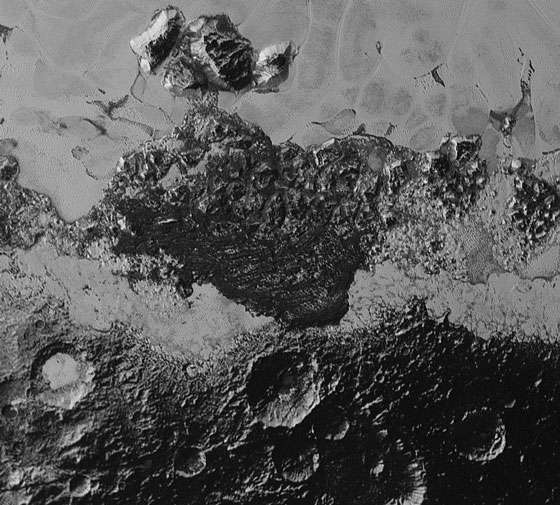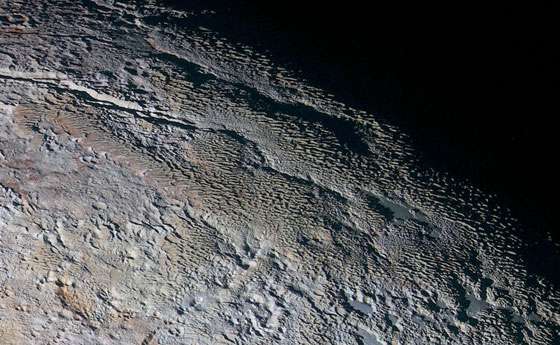Dunes on Pluto? Can a nearly airless world have windblown dunes?

Lori Fenton, Senior Research Scientist and Vice-Chair of the Planetary Exploration Research Thrust at the SETI Institute
The New Horizons team has released a few pictures of the surface of Pluto that have fairly regularly-spaced linear features somewhat similar to desert dunes on Earth.
Just a few years ago, nobody would have ever considered calling landforms like these dunes without a great deal more work, but the discovery of vast dune fields on Saturn's icy moon, Titan, has brought windswept surfaces to the forefront of outer Solar System planetary science. Now when we see similar features on these cold, ice-covered worlds, our first thought is to wonder if they are windblown dunes.
But can the nearly airless world of Pluto really make "wind"? Yes, it can! The atmosphere is just thick enough – or at least it can be at certain times of the Plutonian year – to support strong winds able to blow grains along the ground. My colleague Ryan Ewing of Texas A&M University has proposed that sand grains on Pluto would be about 1 mm in size; a little larger than those typically found on Earth (or Venus, Mars, or Titan, for that matter), and that winds as strong as 140 m/s (that's 313 miles per hour or 504 kilometers per hour) are needed to be able to move these grains.
It sounds strange to think of Pluto as a windswept world, but then again windblown features have been found on comet 67P/Churyumov-Gerasimenko, so why not Pluto too? The images we've seen from Hew Horizons show that sediment has flowed on Pluto's surface, probably as glaciers, and this process could easily create enough fine-grained material to be blown by any wind that's strong enough.
The large dark linear features in the Baré Montes (Figure 1) were the first to be considered dunes. It's possible that's what they are, but it's tough to say for sure. If they are dunes, then they have formed on rough topography so that we see a mix of the dark, linear dune-like features among other mottled surface features. That makes it hard to pick out any characteristics that would be diagnostic of dunes. If they are dunes, then they are likely to be lee dunes, forming from winds blowing from the upper right to the lower left. In this case, the wind would carry sediment over the rough terrain and let dark sand pile up on the lee side, forming dunes that would extend downwind. Many dunes like this have been found on both Mars and Earth.

What are they, if not dunes? Good question. They could be wind-eroded features called yardangs. Or they could be joints: rocks broken into a regular pattern by tectonic stresses. Regular patterns abound in geology; perhaps in time, better imagery will help determine what they are. Equally interesting to me are the much smaller, regularly-spaced bright features on the surrounding plains. Could those be dunes? If so then they're made of very different materials than the larger, darker features of the Baré Montes.
A new spectacular image near Pluto's terminator shows the Tartarus Dorsa, mountains with a distinctive linear texture the New Horizon's team calls "snakeskin" (Figure 2). Could these be dunes? Maybe, but then again maybe not. On the one hand, there are some aspects of these structures that are similar to windblown dunes: They are regularly-spaced, linear features that are superposed on (i.e., sitting on top of) everything else, just like dunes tend to be. On the left side of this field of tan-colored features are some small bright grayish, arcuate shapes that are reminiscent of barchan dunes. On the other hand, there are some aspects of the "snakeskin" that are unlike windblown dunes: they seem unusually sharp-tipped, and they're located on high ground (dunes tend to form in valleys).
So again, the question is what are they, if not dunes? Different conditions on other planets make for different landforms. It could be something we've never seen on Earth. Their sharp tops make me wonder if they're some sort of erosional feature, like sastrugi. As every scientist has said, "we need more and better data to know for sure."
Provided by SETI Institute





















